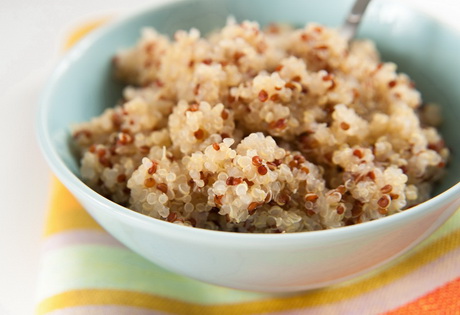
So far, the exotic culture was delivered from Latin America. There has been a boom for this product in Europe — quinoa is rich in proteins and vitamins, it is the basis of various diets. If the fashionable culture gets produced in Russia, it will be much cheaper than the current 350 rubles ($6) per pack.
The Ministry’s spokesperson says that the works on selection of quinoa began in 2009. After 8 years of testing, in 2017 quinoa was included in the state register of plant varieties, approved for use in Russia. This means that Russian producers will be able to commercially cultivate quinoa.
Leaves of this plant are used in salads, seeds — to make grits and flour. Quinoa has a light nutty flavor, it is used to make soups, side dishes, appetizers, beverages, bakery products. In Europe quinoa is sometimes cultivated as one of the greens. Young leaves of quinoa resemble green peas by taste. Rawatarians eat quinoa seeds, soaked in water or as sprouts.
At its 66th session, the UN General Assembly proclaimed 2013 as the international year of quinoa. In Russia, quinoa has gained popularity in recent years. A lot of Russian agricultural producers are now including quinoa in their range of products. Until recently they purchased raw materials abroad, primarily in Latin America.
The association of retailers AKORT (includes Auchan, X5 Retail Group, Dixy, Magnit and other major retail chains) reports that stores of its member companies sell quinoa in small quantities, compared to other cereals, more familiar to Russians.
“Today the availability of quinoa covers the needs of those seeking products for a healthy vegetarian diet, or a very small percentage of the population. The same reason stipulates quite a high price for quinoa, as well other cereals in this category, together with the small volume of packaging (less than 1 kg). Quinoa sprouts can hardly be found in retail chains, they are usually sold at specialized shops.
Vadim Zuikov, President of the National Trade Association, says that quinoa is very and very expensive in Russia. 350 g of quinoa now costs more than 300 rubles.
“If quinoa is grown in Russia, it will reduce prices in several times, consequently, it will make this product affordable for mass consumption,” Vadim Zuikov said.
Representatives of Yarmarka Trade House (one of the leaders in sales of quinoa in Russia) say that quinoa accounted for a minor share in the total sales of cereals in Russia, just 200 tons. The company purchases raw materials in Peru, processes and packs them in Russia. But, as the company’s representative notes, quinoa is rapidly gaining popularity in Russia. The sale of this culture grows by about 20% a year. A real boom for quinoa is observed in Europe — it is used in large quantities and in different variants. This is another reason why Russian companies are glad that quinoa has been included in the state register of plant varieties, approved for use in Russia. A number of farmers that want to grow quinoa are in talks with Yarmarka about future supplies.
Igor Bukharov, President of the Federation of Restaurateurs and Hoteliers of Russia, however, does not consider quinoa a particularly popular product among visitors of Russian restaurants.
“In the 1990s, there was a demand for kangaroo meat, too, and buffalo meat, and many other exotic products. Some time ago there was a boom for arugula. But the fashion for quinoa — I haven’t noticed it,” the expert say.
Quinoa was domesticated by peoples of the Andes about 3,000 years ago, it was the most important food for the Indians. The Incas ate this plant along with potatoes and corn. Quinoa is rich in fiber, calcium, zinc, potassium, manganese, phosphorus (it contains the same amount as in fish), iron (twice more than wheat), vitamins A, E, C. Also, quinoa seed contain lecithin and selenium. The plant is characterized by a large protein content — up to 20%.


Comments (0)
Twitter
Facebook
Pinterest
E-mail